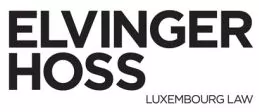- within Antitrust/Competition Law, Law Practice Management and Technology topic(s)
- with readers working within the Banking & Credit industries
Regulation (EU) 2022/858 of 30 May 2022 on a pilot regime for market infrastructures based on distributed ledger technology ("Regulation") introduced a pilot regime for market infrastructures based on distributed ledger technology ("DLT"). The Regulation entered into force on 23 March 2023. It was implemented in Luxembourg by the Law of 15 March 2013 ("Law"), which also introduced certain amendments to existing legislation, namely (i) the Law of 5 April 1993 on the financial sector, as amended, (ii) the Law of 5 August 2005 on financial collateral arrangements, as amended, and (iii) the Law of 30 May 2018 on markets in financial instruments.
DLT is a technology allowing a network of independent and often geographically dispersed computers to update, share and keep a definitive record of data (e.g. information, transactions) in a common decentralised database in a peer-to-peer way, without a supervising central authority. Its potential has been emphasised since 2008, with the development of the blockchain (which is a particular type of DLT).
The Regulation aims at creating a uniform and attractive legal framework for security token activities, which consists in converting the rights attached to an asset into a digital token (security tokens) through the DLT. The Regulation also intends to integrate DLT into existing European financial services legislation, while maintaining financial stability, investor protection and transparency. Thus, DLT multilateral trading facilities ("DLT MTF"), DLT settlement systems ("DLT SS") and DLT trading and settlement systems ("DLT TSS") are governed by the Regulation.
In accordance with MiFID II thresholds, only some financial instruments may be traded on DLT trading platforms. There are also several thresholds that must not be exceeded in terms of the aggregate market value of all financial instruments admitted to trading or registered on a DLT infrastructure: 6 billion euros at the time of admission or registration of a new instrument and above 9 billion euros, the operator must activate an exit transition strategy.
In order to operate a DLT MTF, DLT SS or DLT TSS, the authorisation request to be submitted to a Member State's competent authority must include, inter alia, the following information: (i) the types of envisaged business and the organisational structure, (ii) a description of the distributed registry technology used, (iii) proof that the applicant has put in place sufficient guarantees to honour its commitments and indemnify its customers and (iv) its transition strategy. Authorisation should be granted for a period of up to six years and will only be valid during the pilot regime period. The Regulation provides for certain exemptions from the requirements laid down in the MiFID II/MiFIR and CSDR framework, which are deemed too restrictive to enable authorised financial market infrastructures (or those in the process of being authorised) using DLT to provide trading or securities settlement services, or a combination of these services, for financial instruments.
To allow for a smooth implementation of the Regulation, ESMA published on 30 May 2022 a Q&A with reference ESMA70-460-189. The CSSF, in its capacity as competent authority, issued on 5 April 2023 Circular 23/832, confirming its application of ESMA's guidelines on standard forms, formats and templates to apply for permission to operate a DLT Market Infrastructure (Ref. ESMA70-460-213), published on 8 March 2023.
Finally, in March 2026, ESMA will issue a report on the results of the pilot regime to the European Commission. Following this report, the regime could potentially be made permanent or extended to other financial instruments not covered by the Regulation.
The content of this article is intended to provide a general guide to the subject matter. Specialist advice should be sought about your specific circumstances.


